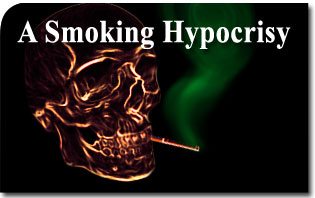 The Surgeon General of the U.S. Public Health Service, Luther L. Terry, M.D., released the first report from the Surgeon General’s Advisory Committee on Smoking and Health on January 11, 1964. This warning kick started an unprecedented and successful antismoking campaign for public health, and it was accomplished in spite of the addictive nature of tobacco and the powerful industry that promoted its use.
The Surgeon General of the U.S. Public Health Service, Luther L. Terry, M.D., released the first report from the Surgeon General’s Advisory Committee on Smoking and Health on January 11, 1964. This warning kick started an unprecedented and successful antismoking campaign for public health, and it was accomplished in spite of the addictive nature of tobacco and the powerful industry that promoted its use.
Ironically 50 years later, while we still see the condemnation of cigarette smoking, we have witnessed the legalizing of marijuana for recreational use in 2 states and for “medical” use in another 16. All of this is happening while marijuana continues to be illegal under the Controlled Substances Act (CSA) 21 U.S.C. § 811, and our federal government does nothing to enforce the law.
Even President Obama has weighed in stating that marijuana smoking is no different than cigarettes or more dangerous than alcohol.1 A statement that is direct conflict with the research and official positions of the Office of National Drug Control Policy (NDCP). As a matter of fact, the NDCP statements2 on the whitehouse.gov website counter the president’s remarks on all accounts. This is not a debate that should be decided by opinion but rather scientific evidence. So why condemn tobacco but allow marijuana?
While there are many that attempt to show that marijuana is harmless, there is strong evidence that it is not as safe as it is touted to be.
Regardless of the superficial studies that have been conducted and the weight of the many opinions regarding this topic, there is strong evidence of harmful chemicals in marijuana that render it unsafe to be used as a medicine let alone recreational use. When considering its use as a medicine, it is no different than any other prescription drug in that it has potential dangerous side effects and the decision to use it to treat illnesses demands the same prudential judgment that is required for any other therapeutic drug. Do the benefits outweigh the dangers? When considering its use for recreational, marijuana has been shown to adversely affect physical health, brain function and memory.
Studies conducted by Dr Nagarkatti from the University of South Carolina suggest that marijuana is a immunosuppressant,3 and its degenerative influence goes beyond the respiratory system. Frequent use can damage the cells in the bronchial passages that protect the body against microorganisms that are inhaled while diminishing the ability of the immune cells in the lungs to fight off bacteria, fungi and tumor cells. It has also been shown to reduce the entire body’s ability to defend itself against infection by weakening natural immune mechanisms, including macrophages, more commonly known as killer cells.
Additional clinical studies have revealed that marijuana use has potential serious negative effects on patients with pre-existing immune deficiencies that have been caused by cancer, chemotherapy, organ transplants and AIDS;4 aggravating many of the same conditions that “medical” marijuana proposes to treat. Doing so puts patients in harms way by treating them with a substance that has the potential to engender in them an illness that their bodies have severely compromised conditions to fight.
Marijuana is considered to be a hallucinogen and recent studies done in the U.S., Sweden, New Zealand and Holland that spanned as much as 15 years, demonstrate a strong correlation between marijuana use in youth and the development of schizophrenia later in life.5 An article in the British Journal of Psychiatry concluded that marijuana is a “causal component,” among others, in the development of schizophrenia and other psychotic disorders.
So can marijuana be considered a serious medicine? A report from the National Institute on Drug Abuse states “the scientific evidence to date is not sufficient for the marijuana plant to gain FDA approval, for two main reasons. First, there have not been enough clinical trials showing that marijuana’s benefits outweigh its health risks in patients with the symptoms it is meant to treat. The FDA requires carefully conducted studies in large numbers of patients to accurately assess the benefits and risks of a potential medication. A substance must have well-defined and measureable ingredients that are consistent from one unit, such as a pill or injection, to the next. This consistency allows doctors to determine the dose and frequency. As the marijuana plant contains hundreds of chemical compounds that may have different effects and that vary from plant to plant, its use as a medicine is difficult to evaluate.”6
Additionally, Richard Gil Kerlikowske, the drug czar from the National Drug Control Strategy, lists marijuana as one of the four major illegal drugs: cocaine, heroin, marijuana and methamphetamine, and it is considered a gateway for more lethal drug use. One is left absolutely perplexed why the federal government contradicts itself regarding marijuana.
In sum, for 50 years the public has been taught that smoking is hazardous to ones health, but suddenly, it now seems fine to smoke marijuana—the effects of which have not been thoroughly studied and which definitively poses significant health risks. Our government’s ambivalence toward illegal drug use and the Controlled Substances Act is a smoking hypocrisy.
Footnotes
- http://www.newyorker.com/reporting/2014/01/27/140127fa_fact_remnick?currentPage=all
- http://www.whitehouse.gov/sites/default/files/ondcp/issues-content/marijuana_and_public_health_one_pager_-_final.pdf
- http://www.sciencedaily.com/releases/2010/11/101124214728.htm
- http://cyber.law.harvard.edu/evidence99/marijuana/Health_1.html
- http://www.ncbi.nlm.nih.gov/pmc/articles/PMC1124674/
- http://www.drugabuse.gov/publications/drugfacts/marijuana

